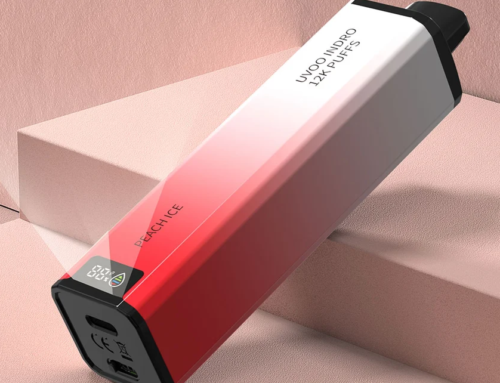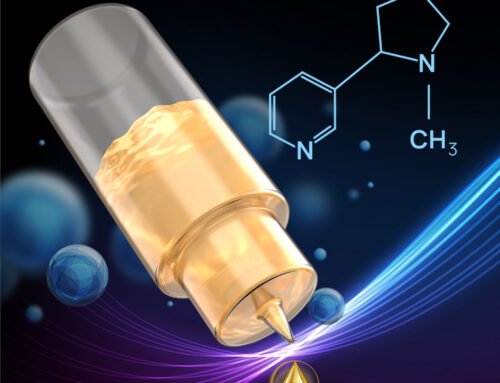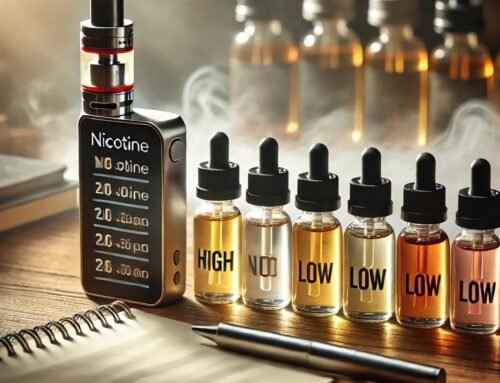Coil Building Guide: Crafting the Heartbeat of Your Vape
When it comes to vaping, the coil is often referred to as the “heartbeat” of your device, and for good reason. It is the component that heats the e-liquid and turns it into vapor, dictating the overall experience, flavor intensity, and cloud production. While pre-made coils are convenient, building your own allows for a more personalized experience and can lead to better performance. This guide will walk you through the essentials of coil building, helping you craft the perfect setup for your vape.
QUICK LINKS
- Why Build Your Own Coil?
- Essential Tools and Materials
- Step-by-Step Coil Building Guide
- Advanced Coil Building Techniques
- Safety Tips for Coil Building
- Final Thoughts
Why Build Your Own Coil?
Building your own coil comes with several benefits:
- Customization: Tailor the resistance, material, and style to your preference.
- Cost-Effectiveness: Pre-made coils can be expensive. Building your own can save money in the long run.
- Flavor & Vapor Production: With the right build, you can optimize flavor or cloud production, or strike a balance between the two.
- Satisfaction: For many, coil building is a hobby that adds an extra layer of enjoyment to vaping.
Essential Tools and Materials
Before you start building coils, you’ll need a few basic tools and materials:
- Wire: Kanthal, stainless steel, nichrome, and titanium are popular options. Each type of wire has its own characteristics in terms of heat, resistance, and ramp-up time.
- Coil Jig or Rod: To wrap your coils neatly and precisely.
- Wire Cutters: To trim excess wire.
- Tweezers (ceramic): For positioning and adjusting coils without creating shorts.
- Ohm Meter or Regulated Mod: To check coil resistance and ensure safety.
- Cotton: Used for wicking, which allows the e-liquid to reach the coil.
Step-by-Step Coil Building Guide
1. Choosing Your Wire
The first step in coil building is selecting the wire type. Different metals behave differently:
- Kanthal: Durable, easy to work with, and has a stable resistance. It’s a great option for beginners.
- Nichrome: Heats up faster than Kanthal but is less durable.
- Stainless Steel (SS): Offers versatility as it can be used in both wattage and temperature control (TC) modes.
- Titanium: Used exclusively for TC mode but requires careful handling due to potential oxidation.
The wire gauge (thickness) also affects the coil. Lower gauge wires (e.g., 24-26g) are thicker and offer lower resistance, while higher gauge wires (e.g., 28-30g) are thinner and offer higher resistance.
2. Determine the Coil Resistance (Ohms)
The resistance of your coil plays a crucial role in your vaping experience. Lower resistance coils (sub-ohm, below 1.0 ohm) produce larger clouds and more heat, while higher resistance coils provide a cooler, more flavor-focused experience.
A helpful tool here is Ohm’s Law to ensure your build is safe. The formula is:
Voltage (V)=Current (I)×Resistance (R)
Use this to calculate the amperage required for your build. Make sure your mod and battery can handle the load.
3. Wrap the Coil
Now, it’s time to wrap the coil:
- Take your chosen wire and coil jig or rod.
- Start by holding the end of the wire firmly and wrap it around the rod 5 to 10 times, depending on the number of wraps you want. More wraps mean higher resistance.
- Make sure each wrap is close and even for better performance.
- Once you’ve wrapped the wire, leave small legs (ends of the wire) for connecting to your atomizer’s posts.
4. Install the Coil
With the coil wrapped, it’s time to install it into your atomizer:
- Attach the coil to your atomizer’s deck by placing the coil’s legs into the post holes and securing them with screws.
- Use tweezers to position the coil centrally so that it doesn’t touch any part of the deck or cap.
- Check your ohm meter or mod to ensure the coil’s resistance is within safe limits.
5. Dry Firing the Coil
Once your coil is secured, gently dry fire it (pulse the power button on your mod) at low wattage to burn off any residues and check for hotspots:
- If you see any uneven glowing, adjust the coil with tweezers while it’s still warm.
- The goal is to have the coil heat up evenly from the center outwards.
6. Wicking the Coil
After the coil has cooled down, it’s time to wick it:
- Cut a strip of cotton, ensuring it’s thick enough to fill the coil but not too tight.
- Roll the cotton gently and thread it through the coil.
- Trim the ends of the cotton, leaving enough length to tuck into the wicking channels or deck.
- Fluff the cotton for better absorption, and avoid packing it too tightly.
7. Priming and Reassembly
Before reassembling your atomizer, prime the wick by saturating the cotton with your e-liquid. This prevents dry hits when you fire up the device. Once everything is in place, reassemble your atomizer, fill it with e-liquid, and you’re ready to vape.
Advanced Coil Building Techniques
Once you’re comfortable with basic coils, you can experiment with advanced builds:
- Twisted Coils: Two or more strands of wire twisted together for increased surface area and better flavor production.
- Clapton Coils: A wire wrapped around a thicker core wire, offering more surface area for vaporization, which enhances flavor.
- Parallel Coils: Two wires side by side to lower resistance and increase surface area for larger vapor clouds.
- Alien Coils: A highly intricate coil made from Clapton wire, known for its high vapor and flavor output.
Safety Tips for Coil Building
- Check your battery safety: Always ensure your batteries are capable of handling your build’s resistance.
- Double-check resistance: Use an ohm meter to verify your coil’s resistance before firing it.
- Avoid short circuits: Make sure the coil is not touching any part of the atomizer except for the posts.
- Stay within your mod’s limits: Know the wattage range of your device and keep your build within a safe range.
Final Thoughts
Building your own coils allows you to fine-tune your vaping experience, whether you’re chasing intense flavors or huge clouds. It’s a rewarding process that not only saves money but also gives you a deeper understanding of your device. With practice and the right tools, you can craft the perfect coil for your vaping style and enjoy the satisfaction of a custom-built setup. Happy coil building!




